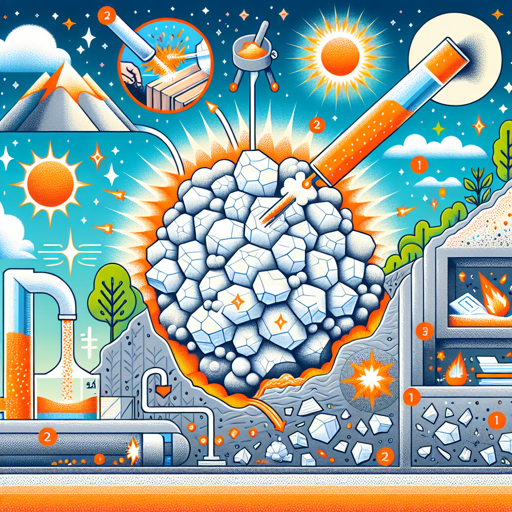Unraveling the Perlite Expansion Process
Dive deep into the fascinating journey of perlite from a volcanic glass to a versatile mineral.

The Perlite Expansion Process: A Geological Marvel
Perlite, a form of volcanic glass, has been part of our lives in more ways than we can imagine. It’s in the construction materials that make up our homes, the horticultural mixes that nourish our plants, and even the filtration systems that ensure we have clean drinking water. But how does this seemingly ordinary volcanic rock become such a versatile material? The answer lies in the fascinating process known as perlite expansion.
Unearthing the Origins of Perlite
Perlite originates from obsidian, a volcanic glass formed from rapidly cooling lava. What makes perlite unique is its high water content, typically between 2 to 5 percent. This trapped water gives perlite its distinctive characteristic - the ability to expand when heated.
When perlite ore is heated to temperatures of 850 to 900 degrees Celsius, the water trapped inside vaporizes, causing the perlite to expand up to 20 times its original volume. This process, known as perlite expansion, transforms the dense perlite ore into a white, lightweight material full of tiny air pockets.
The Perlite Expansion Process
The perlite expansion process begins with the extraction of perlite ore from open-pit mines. The ore is then crushed and screened to a suitable granule size for processing.
From here, the granules are fed into a vertical furnace, heated to expansion temperatures, and held there for a predetermined amount of time. As the granules heat, the trapped water turns to steam, causing the perlite to “pop” like popcorn. The result is a white, lightweight expanded perlite with a porous structure.
“A mineral is a naturally occurring substance, representable by a chemical formula, that is usually solid and inorganic, and has a crystal structure. Perlite, with its unique ability to expand when heated, truly exemplifies the marvel of mineralogy.” - Nicholas Steno, Father of Geology
The following table provides a comparison of perlite before and after the expansion process:
| Property | Raw Perlite | Expanded Perlite |
|---|---|---|
| Appearance | Dark grey/brown, dense | White, lightweight |
| Volume | 1x | Up to 20x |
| Water Content | 2-5% | Approx. 0.5% |
| Applications | Limited | Construction, horticulture, filtration, insulation, and more |
This transformation process is not only intriguing from a geological point of view, but it also makes perlite an incredibly versatile material. Expanded perlite’s low density, thermal insulation properties, and chemical inertness make it suitable for a wide range of applications.
The Perlite Institute offers a wealth of information on the extraction, processing, and uses of this fascinating mineral.
Closing Thoughts
The journey of perlite, from a dense volcanic rock to a lightweight, versatile material, is a testament to the wonders of geology and mineral processing. The perlite expansion process, while seemingly simple, is a geological marvel that underscores the intricate and dynamic nature of our planet’s minerals.
Understanding the science behind these processes not only enriches our knowledge of the Earth but also allows us to appreciate the often overlooked minerals that play significant roles in our everyday lives. Next time you come across perlite, whether in a construction site or a potting mix, take a moment to appreciate the remarkable journey it has taken from the heart of a volcano to its current form.